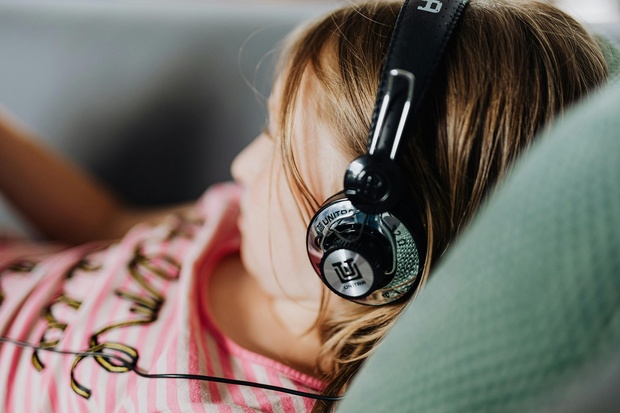You’re not quite sure where to sit, who your teacher is, or where your best friend has gone – you search through a sea of faces, maybe that’s him way over on the other side of the seemingly vast space.
You feel unsettled, unsure, anxious, lost – the day’s lesson has begun and you haven’t heard a word the teacher has said.
This is how many neurodiverse students might describe their experience in an Innovative Learning Environment (ILE).
These spaces are often characterised by impressive architecture, flexible seating arrangements sometimes including couches and bean bags, and walls which can be removed or opened up to allow multiple classes to collaborate in one large space.
In 2011, the New Zealand Government began a 10-year infrastructure project to turn ageing, traditional, single cell classrooms into ILEs.
And for the past eight years or so, Madelaine Armstrong-Willcocks, head of programmes at New Zealand Centre for Gifted Education, has been hearing stories of struggle in these environments, from the gifted, and often neurodiverse, students and parents she works with.
She says these students can be impacted on a number of levels including aural, visual and social.
Large open spaces, often without acoustic baffling, coupled with a large number of children in one space, means that many learners can struggle to maintain focus, particularly those who are neurodiverse and can be hypersensitive to noise.
“So, our kids that are struggling to concentrate on one person at a time, are going to really struggle in that environment because it would be very seldom in a room of 100 people that there's only one person speaking,” Armstrong-Willcocks says.
“There’s usually 20 or 30 or 40 people speaking all at once.
“And even when those conversations are at a low volume, it still prevents kids from focusing on the one thing that they’re trying to get done at that point in time.”
And while the spaces are often designed to promote flexibility and fluid movement, Armstrong-Willcocks says often that means the available seating doesn’t always align with the number of students in the class.
“We’ve had feedback from some parents who said that their child prefers to arrive at school super early, as early as they possibly can, so they can secure their seating preference for the day,” she says.
“[They say] ‘I want this spot in this corner, that’s away from all of this other action’.
“We’ve heard of food insecurity, but it’s desk insecurity.”
While the openness and flexibility of the space can encourage exploration, collaboration, and discussion, as the Ministry of Education claims, it can also have adverse affects on some students.
“These kids want to have their own physical space … and that lack of structure and order, even in the physical environment, translates directly into their mental environment,” Armstrong-Willcocks says.
“They can feel unhinged, unsettled, they don’t have an anchor point in the room when there’s people everywhere and different furniture everywhere.”
And while neurodiverse students can often struggle socially, ILEs may only exacerbate this issue.
“Say if there’s four teachers, so essentially four classes of kids,” Armstrong-Willcocks says.
“Kids might move flexibly, like they might do maths in one part of the space with one teacher and one group of kids, and then do some language learning with a different group of kids … so they are moving between social groups really frequently.
“It makes it really hard for kids to form those sustained and close friendships they rely on in to be able to get through, socially.”
In essence, Armstrong-Willcocks says ILEs can lead to an incredible sense of overstimulation for many gifted and neurodiverse students.
“This means they are struggling all the time to keep a baseline of regulation, to keep that sense of being calm and stable, regulated, in an orderly environment,” she says.
“And they don’t have enough effort left for the learning.”
And for children whose efforts in regulating aren’t successful, it can lead to high levels of anxiety, defiant behaviour or school refusal.
“But it can also be, and this is probably more the case for our gifted girls, they just disappear,” Armstrong-Willcocks explains.
“So in that great mass of people, their often quite deliberate strategy is to avoid as much as they possibly can, to get their heads down in a corner with a book or with headphones, to be able to get some calm.
“So their efforts at regulation are probably working, but they’re still not able to actually participate in learning.”
Armstrong-Willcocks has many stories to share and she is not alone. Teachers across Aotearoa are starting to question the value and inclusivity of ILEs.
Barbara Bowen, principal of Tāhunanui School in Nelson recently installed sliding doors into the school’s ILE.
“What we found ... was that the acoustics didn’t match 100 people being in one big space,” Bowen told Stuff.
“Some children with neuro-diversities didn’t cope in the environment, and when pupils needed to break off into smaller groups, they had to go outside.”
Researchers Dr Mengnan Li and Dr Mohamed Alansari from the New Zealand Council for Educational Research say teachers expressed concerns for students with special needs in ILEs in their article Secondary Teachers’ Working Experiences in Innovative Learning Environments: Enablers and Influences.
While Armstrong-Willcocks admits Innovative Learning Environments can work really well for some students, she says they are absolutely discriminatory when it comes to neurodivergent kids.
“The thinking behind these environments is that they’re more flexible and more innovative, but I would argue that great teachers and great schools can be flexible and innovative without having 100 kids in one space,” she says.
“It’s not the space that demands innovation, it’s the mindset of teachers rather than the design of the building.
“But the design of these buildings is making it extremely difficult for quite a number of our children to participate in education.
“That’s not innovation.”















